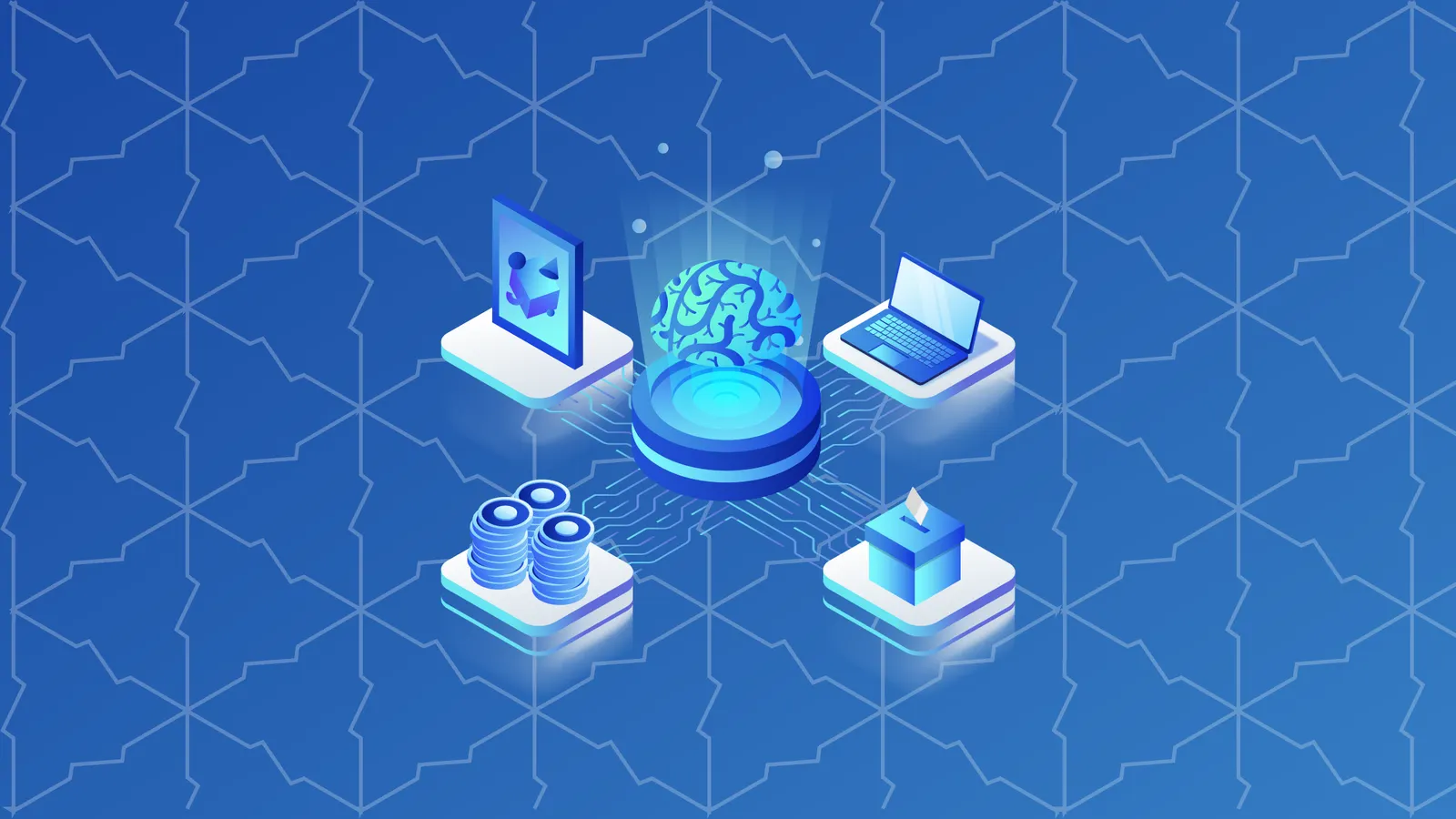Generative artificial intelligence (AI) has attracted widespread attention in recent years with the advent of the chatbot ChatGPT and similar AI systems. Today’s generative AI tools are algorithms designed to create new content—from music to conversation to novels to computer code to video games and much more. Supporters of generative AI say it makes the creative process accessible to anyone who can use the AI tools. And while there is a good deal of conversation—and concern—about the potential for generative AI to take jobs away from human artists, most current generative AI systems actually rely on a partnership between person and machine.
One of the most popular areas of generative AI is visual art. Art-making AI platforms typically produce a visual representation from one or more prompts provided by a human user. Many of these platforms make use of Web3 technology and ecosystems, further enhancing their appeal among forward-minded creators eager to see what the latest AI systems can do to enhance their own abilities.
Below, we’ll explore some of the basics of AI-driven generative art before taking a closer look at a few of the tools, projects, and considerations users should keep in mind when experimenting with these systems.
How Does AI-Driven Generative Art Work?
Generative AI tools make use of a process known as machine learning. The creators of these algorithms task them with sorting through unbelievably large quantities of data to detect patterns and extrapolate rules (one version of ChatGPT reportedly trained with a whopping 45 terabytes of text data). Through this process, generative AI can first perceive or identify aspects of a new bit of data—for example, an art AI system could “learn” how to pick out new photos that include a flamingo—and, more recently, it has begun to be able to create new works from a prompt. Many art-making AIs use tools known as generative adversarial networks, or GANs, algorithms used to analyze datasets of existing art works. To be sure, some types of generative AI are fully autonomous, though here we will focus on those designed to work in tandem with humans.
Generative AI and Web3: Freedom and Accessibility
Many users see generative AI as a powerful tool to support the transition to a Web3 ecosystem in which central authorities of the previous iteration of the internet are done away with. One way that generative AI is compatible with the ideals of Web3 is in the way that it breaks down barriers to access. For example, imagine a popular tool used to create music on the internet today—inevitably, the most powerful of these tools will require users to pay a software or licensing fee. And even if they are available for free, a user must have tremendous experience and expertise in order to actually produce a song that rivals what can be heard on the radio. These are barriers to creation that are baked into the current internet culture.
Many generative AI tools, on the other hand, are either free or require only modest fees and little by way of external equipment. A user of a program like DALL-E or StarryAI does not need to go out and invest in expensive cameras, canvases, or paint. In fact, that user doesn’t even need to be an experienced artist in order to create something impressive.
The world of AI-generated non-fungible tokens (NFTs) is an aspect of this branch of AI that skirts even closer to Web3 systems including blockchain ecosystems and cryptocurrencies. Code Canvas, a Solana-based platform, is an example of a system that aims to connect these two worlds. Users can use the platform to mint NFTs on-chain and quickly enter into the potentially-lucrative NFT market. Code Canvas could help users who not only desire support for creating NFTs in a complex blockchain-based ecosystem, but also rely on help from an AI tool to actually create the art works themselves. Art Blocks is another similar platform which generated about $1 billion for NFT creators in 2021.
User Input and Algorithms
A key aspect of many collaborative generative AI tools is the need for human input. Enter a text-based prompt into an art-generating AI system, and the system will quickly produce a visual representation of that prompt. AI tools are even designed to include randomness so that identical prompts can yield a wide variety of outputs.
The decentralized nature of blockchains and cryptocurrency ecosystems can aid in this randomness. By removing a central authority, blockchains allow for secure and, in some cases, randomized actions. The tasks of many smart contracts are a prime example, executing automatically when certain conditions are met but not necessarily producing the same results each time. Generative AI developers and users can make use of these elements of the blockchain space to enhance the output power of their AI systems.
The Copyright Issue
One significant concern for artists partnering with generative AI to create new works is ownership. Beyond the questions of whether the human or the machine (or the developers of the machine) own an AI-generated collaborative work, there is the more fundamental question of whether AI tools can truly create unique work at all. After all, they are trained on massive troves of data, and copyrighted elements have been known to creep into “new” creations.
In short, this is a thorny issue that has not yet been resolved around the world. In the U.S., the government typically considers works created by non-humans to be ineligible for copyright protection. Thus, works created in tandem between humans and AI may be partially eligible—for example, if it is clear which parts were created by human and which by AI. A September 2022 case involving a graphic novel created collaboratively by a human user and Midjourney, an art-generating AI tool, was a landmark in this space. The U.S. Copyright Office granted a first-ever registration for the work, but later partially canceled its copyright registration.
A Web3 ecosystem in which copyright issues may be addressed using other means could have massive repercussions for generative AI and its human users. This will likely take a good deal of time to sort out, though.
Cheat Sheet
- Most art-generating artificial intelligence (AI) tools make use of human input, creating the opportunity for collaboration between a person and an AI system.
- Generative AI is trained on vast amounts of data to be able to recognize and then produce content based on these prompts—as an example, a version of ChatGPT was trained on 45 terabytes of data.
- The fact that these tools are generally easily accessible, free or low cost, and that they help even inexperienced users create high-quality content makes them an excellent fit with the decentralized Web3 ecosystem.
- Code Canvas and Art Blocks are examples of platforms built with the assistance of blockchain tools which allow users to quickly and easily mint high-quality NFTs.
- Art Blocks generated almost $1 billion for users in 2021 alone.
- Another way that these tools may be linked with Web3 systems is in their use of randomness.
- Copyright concerns remain a significant issue for generative AI and its users.


